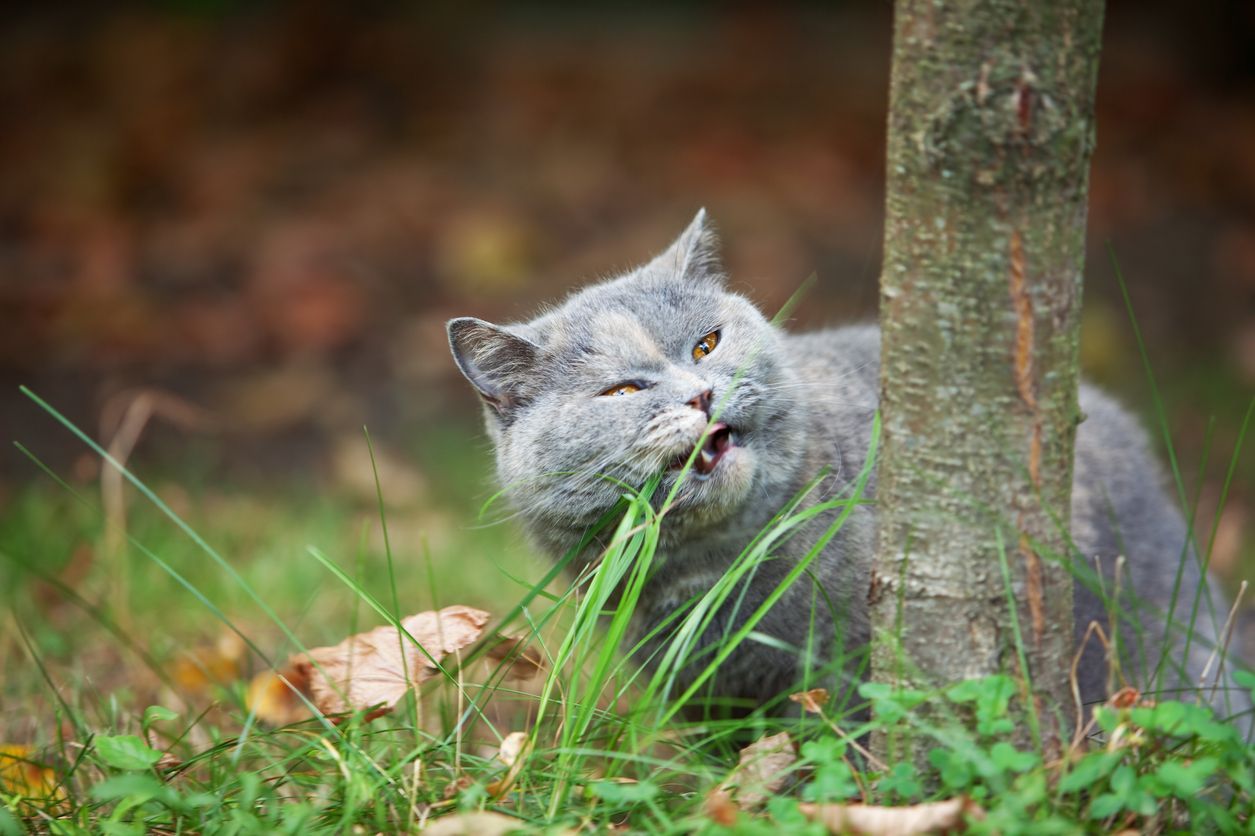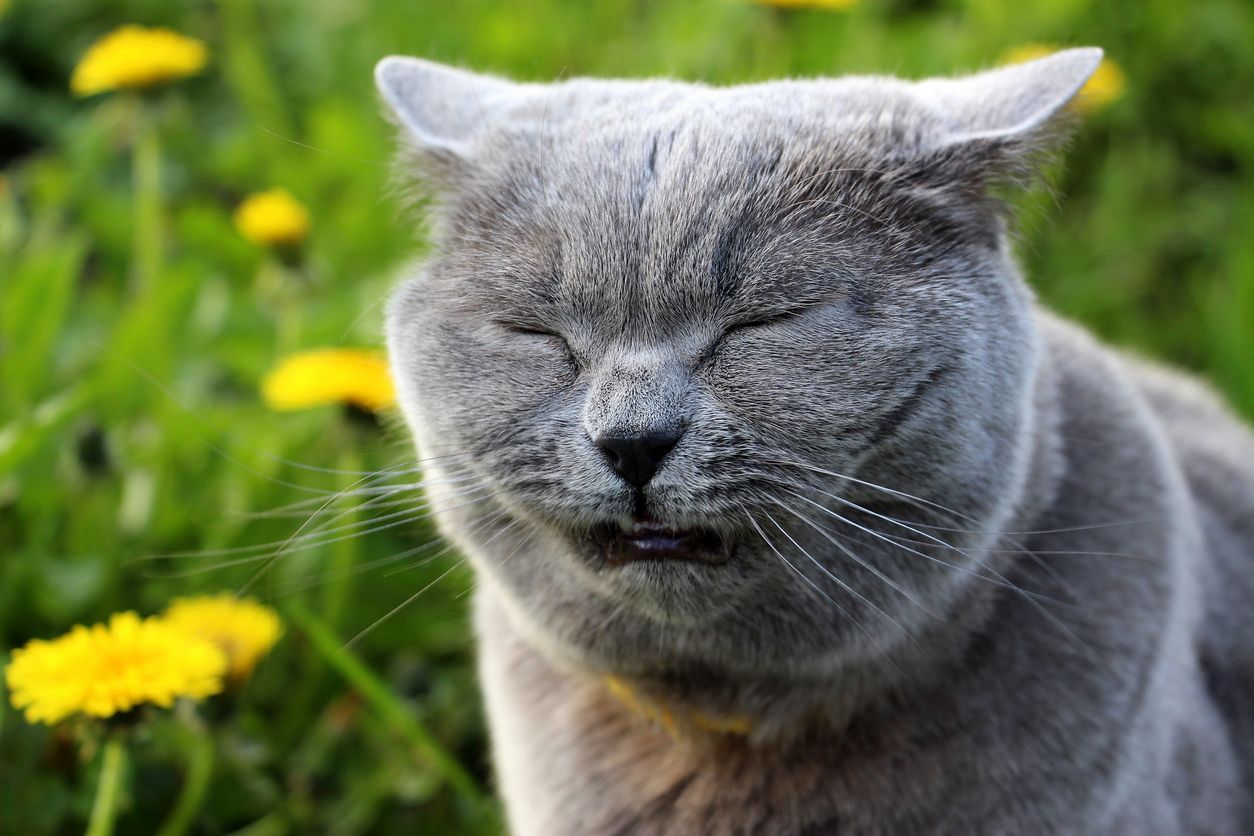What to do if your cat has gingivitis or periodontal disease

Gingivitis and periodontal disease are the most common forms of dental disease in cats. When left untreated, these dental conditions can lead to tooth loss and pain that affects the well-being of the afflicted cat. Read on if you have a cat and have ever wondered:
- What is gum disease?
- How does a vet diagnose and treat gum disease in cats?
- How do I know if my cat has dental disease?
- Can I prevent dental disease in my cat?
Routine dental care and dental cleanings are important for the prevention and treatment of dental disease in cats. Gum disease is very common in cats and may require different types of treatment depending on the underlying cause.
What are gingivitis and periodontal disease?
Both gingivitis and periodontal disease are forms of gum disease in cats. Gingivitis in cats occurs when the gums become inflamed due to disease or poor oral hygiene. When left untreated, severe gingivitis leads to periodontal disease, or periodontitis, which causes the tissue that connects the teeth to the gums and jawbone to weaken. Periodontitis and gingivitis may lead to tooth loss, oral pain, and other severe symptoms.
How do veterinarians diagnose and treat gum disease in cats?
Dental disease is diagnosed with an oral examination by a veterinarian. A cat with gum disease may have reddened or inflamed gums, gums that bleed, or a buildup of tartar around the gumline. A dental examination and X-rays under anesthesia are needed to fully diagnose the extent of gum disease. Much of the damage from severe gum disease occurs below the gumline around the tooth roots and requires X-rays to visualize the full extent of the damage.
“The overall treatment of gum disease in cats varies depending on its underlying cause,” explains Vetster veterinarian Dr. Jo Myers. “Gum disease in cats can be a result of autoimmune diseases, viral infections, genetics, or poor oral care at home.” Mild gingivitis can often be reversed when treated with a dental cleaning from a veterinarian and home dental care. Periodontitis is also treated with professional dental care but cannot be reversed and often requires additional, more invasive procedures such as tooth extractions. Cats that suffer from dental disease due to a severe immune response from illness may need to have all their teeth extracted to prevent further complications and pain. It is much easier for a cat to adapt to missing teeth than to cope with prolonged oral pain. After a tooth extraction, a vet may recommend pain medication. For cats who have lost a considerable number of teeth, a diet change from dry food to wet food may also be recommended.

What are the stages of gum disease in cats?
Gum disease occurs in stages of severity from mild to severe. Since gum disease can advance quickly in some cats, early detection and treatment are important for a cat’s oral health.
Stage 1: Gingivitis - Gum inflammation without the loss of tooth attachment
Stage 2: Early periodontitis - 25% of tooth attachment is lost, and gums may bleed
Stage 3: Moderate periodontitis - Up to 50% of tooth attachment is lost and extraction may be required
Stage 4: Advanced periodontitis - More than 50% of tooth attachment is lost and removal of multiple diseased teeth is likely
Accurate diagnosis and safe treatment of all stages of gum disease require general anesthesia and dental X-rays.
What are the signs of gingivitis and periodontal disease in cats?
Symptoms of gingivitis and other forms of gum disease can be subtle to cat owners, as cats often hide pain and discomfort or do not tolerate brushing at home. Symptoms of dental disease may include:
- Bad breath
- Red, inflamed, or swollen gums
- Bleeding gums
- Missing or loose teeth
- Favoring one side of the mouth
- Loss of appetite or difficulty eating
- Irritability
Bad breath is one of the most common signs of dental disease in cats and is often overlooked by pet owners. Foul-smelling breath, outside of eating something smelly, is never normal in cats. As gum disease progresses, symptoms become more severe.
Can feline gum disease be prevented?
Some forms of gum disease in cats can be prevented with routine vaccinations. Feline gingivitis is a painful condition that can occur due to diseases such as feline leukemia virus (FeLV) and feline calicivirus (FCV), both of which can be vaccinated against. As such, keeping up with your cat’s vaccinations can prevent gum disease caused by these conditions. Feline immunodeficiency virus (FIV) can also trigger the feline gingivitis inflammatory response. Although vaccination against this virus isn’t usually recommended, you also can reduce your cat’s risk by keeping them inside.
Poor dental hygiene at home can also play a role in your cat’s oral health. If tolerated, daily toothbrushing at home is the best way to remove plaque buildup that leads to gingivitis. If it is unsafe or unrealistic to brush your cat’s teeth at home, use Veterinary Oral Health Council-approved products to help slow the accumulation of plaque and tartar on your cat’s teeth. Regular dental exams and cleanings also safely remove plaque and tartar to keep a cat’s teeth healthy and clean. Preventing gum disease with routine cleanings and at-home dental care is much easier, safer, and more affordable than treating more advanced dental disease.
Why are dental cleanings important?
Professional cleanings with a veterinarian are important for a cat’s dental health for a few reasons. With the use of anesthesia, a thorough dental examination including X-rays can be performed to catch gum disease as well as other forms of dental disease, such as resorptive lesions. Dental cleanings under anesthesia also allow a veterinarian to clean plaque under the gumline that cannot be removed by brushing at home. Hardened tartar on the tooth surface also cannot be removed by brushing and requires professional cleaning. Many cat owners are nervous about anesthesia. However, the risks involved with anesthesia are much lower than the health risks of advanced dental disease in cats.
What should I do if my cat has symptoms of gingivitis?
The first signs of gum disease noticed by cat owners are usually red gums or bad breath. A buildup of yellow or brown tartar on the canine teeth or molars may be visible without other obvious symptoms. Cats often hide when they are in pain, so other symptoms may not be apparent until a cat has severe dental disease. Talk to a vet any time you notice a change in your cat’s breath or the appearance of their teeth. Regular dental checkups and dental cleanings can help prevent the advancement of gum disease symptoms. If you have questions about your cat’s dental health or would like guidance on how to care for your cat’s teeth, you can quickly connect with an online vet who can help you from the comfort of your home.
FAQ - What to do if your cat has gingivitis or periodontal disease
How do you fix gingivitis in cats?
Feline gingivitis can be caused by many underlying conditions, so the treatment varies. Gingivitis treatment often involves a professional dental cleaning under anesthesia with a veterinarian and at-home dental care with daily brushing. If toothbrushing is not feasible for your cat, talk to a vet about other products that can help slow plaque buildup between cleanings.
How do you treat periodontal disease in cats?
Periodontal disease can be severe and requires professional dental care with a veterinarian. Because the disease causes damage to the tissue that connects a cat’s teeth to the gums and jawbone, the affected teeth may require removal.
How much does it cost to treat periodontal disease in cats?
Periodontal disease and resulting tooth extractions can drastically raise the price of a routine dental cleaning with a veterinarian. Dentals can range in price from a few hundred to a couple thousand dollars, depending on the severity of the dental problem. It is much easier, safer, and cheaper to prevent dental disease than to treat it.
How long can a cat live with gum disease?
Severe dental disease can have harmful effects on the liver, kidneys, and other areas of the body, in addition to potentially affecting a cat’s ability to eat. While not all gum disease is deadly, it’s important to treat it for the overall health and well-being of the affected cat.




